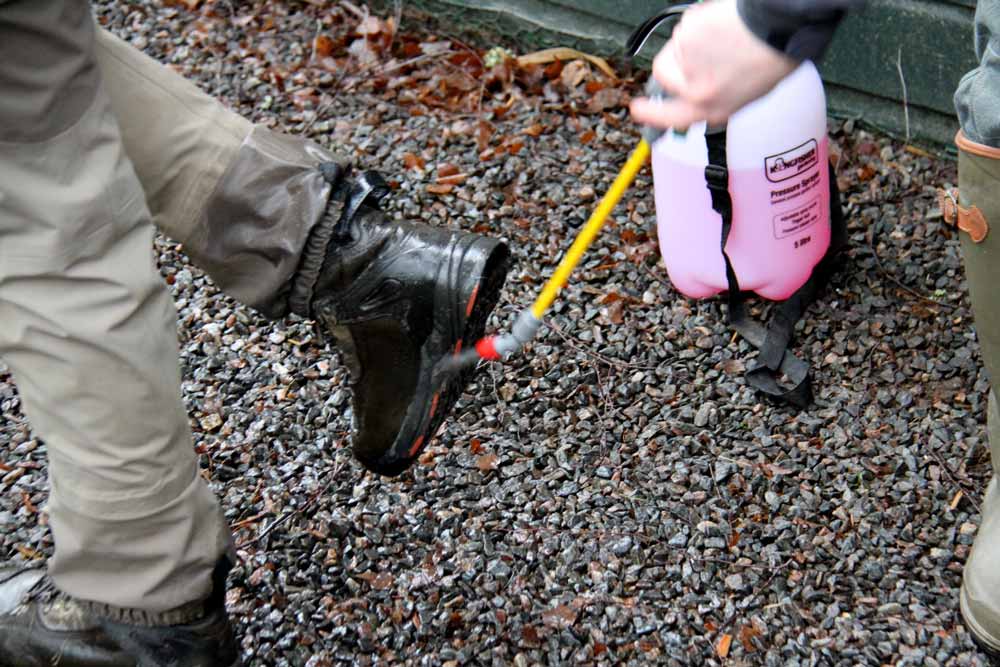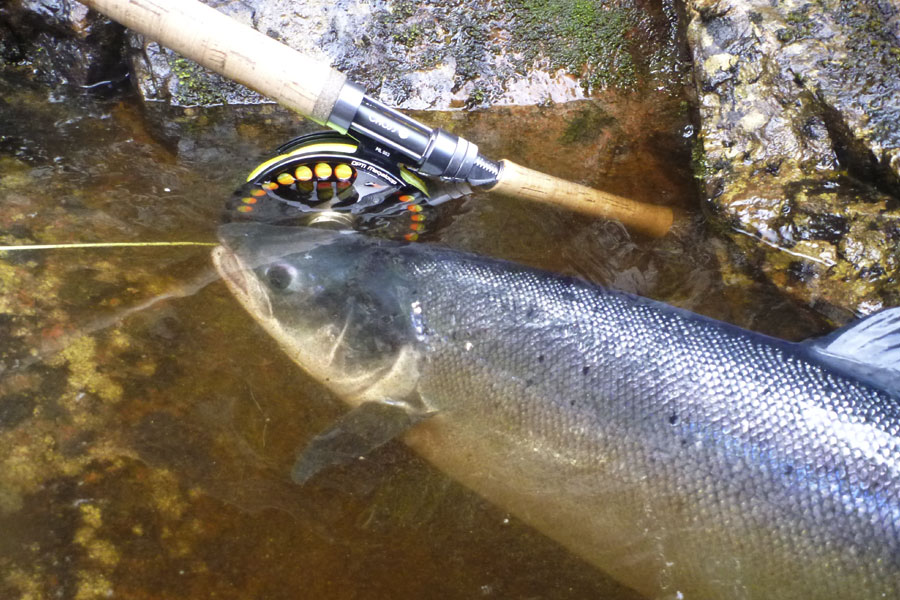Biosecurity in waterways is no new matter. In angling, the most tragic and horrendous loss of Salmon due to the unfortunate introduction of a parasite into a waterway was in Norway. Catastrophic losses of wild Atlantic salmon occurred here in the 1970s following the introduction of Gyrodactylus Salaris (aka.Salmon Fluke or slang Gyro). By 2001, the salmon populations of 41 Norwegian rivers had been virtually wiped out because of this leech like parasite.

Grappling to the skin of the salmon at one end with 16 hooks, and at the other end the tubular parasite dissolves the flesh of the fish whilst still alive and then re-ingests it. Not seen by the naked eye the gyro bug is observed by horrendous wounds left in its wake. These wounds are then open to infection by other parasites. If this isn’t bad enough, the gyro bug reproduces itself giving birth to similar sized offspring which are ready to start consuming the host fish immediately, and they are reproduction ready immediately too.

http://forskning.no/meninger/kronikk/2015/03/upresist-og-uriktig-om-gyrodactylus-salarisfiskeparasitt
Some Norwegian Rivers were poisoned with Rotenone from their sources down in a planned effort to remove the parasite that can also survive on other hosts like trout and seatrout. This clean slate tactic made sense only now that everything in that river was already dead or dying. Of course the plan worked, but as soon as the rain came and the rivers rose to a level that just one puddle or tributary containing the parasite was flooded, the parasite took hold again infecting everything that swam up the system. Eventually it is thought the parasite simply fed itself to starvation and died off or the poison was successful and the fish re-introduced.
Watching waves of dead salmon floating down a river, it would bring any angler and non-anglers to tears.

http://www.klv.no/trusselbilde_gyro.php
For 30 years, this battle to release the rivers from this death sentence eventually eased, and now the salmon are starting to return, and the ecosystems along with them are slowly strengthening.
Imagine you were the one responsible for this horrific tragedy!
Even if you were not held responsible, but in the back of your mind you knew you didn’t disinfect your used equipment before fishing a river somewhere and this sort of tragedy happened again… the guilt would consume the right-minded.
Returning to its original splendour is the Laerdal River in Norway plagued by Gyro for 25 years. You are responsible not to let this sort of amazing recovery pointless.
A simple avoidance measure exists!
Well managed waterways are very aware of the travelling angler and the threat to their salmon/ecosystem/communities and livelihoods. So on the River Dee as an example, your boots will be sprayed or immersed in a Virkon 1% solution upon your arrival at the fishing hut. The River Dee does not need another disaster especially after the poor returning numbers of these last few years which now all anglers are relieved to have witnessed a lift in numbers the 2017 season. Also, who could forget the flooding of Storm Frank in February 2016 wiping out the town of Ballater, roads, fields, landmarks, ripping up pools in the river and of course smothering the salmon redds that the few successful spawning salmon managed to make.

The River Dee – Little Blackhall and Inchmarlo
For the rest of the UK please speak with the fishery(ies) you plan to visit from overseas and ask what their policies are.
Norway has its individual waterway managements disinfect the equipment for a very good reason. Whatever comes into the country is obviously a necessity to disinfect, but also from one river to another, cross contamination is so easy. Anglers fishing one river and then moving on to another river are required to disinfect their gear again. Baths of Virkon seem to be the most popular solution. Anglers will be asked to wear their boots and waders and stand in the disinfection bath and ‘scrub up’, a simple hose-down afterwards removes the chemical and smell from your equipment ready for you to fish with peace of mind.
Iceland requires by Icelandic law, that use of fishing equipment is prohibited if it has been used abroad, unless the equipment has been disinfected according to their rules and within 3 weeks of travel. Stamped vetinary disinfection certificates are required to enter the equipment into Iceland, but if you did not know this prior to travelling there is the facility at the airports to disinfect everything. Download the necessary certificate here.

MAST Iceland – http://www.mast.is/english
An example is “The company ISAVIA operates a fast disinfection service at Keflavik Int. Airport for a fee of approx. 4,900 ISK (approx £36) for each rod, including related accessories. (MAST – http://www.mast.is/english/frontpage/import-export/import/fishingequipment/)
Summary:
In short, if you are travelling and unsure, take your equipment to your local veterinary practice for disinfection procedure and certification. At least then you know everything is in order and you are covered if the worst were to happen. We would suggest to local customers of Angling Active in Stirling to come to our next door neighbours Clydevet Group. (http://www.clydevetgroup.co.uk/farm/farm.htm) Tel:01786231199. Please contact your local vet for more details.
Remember to disinfect your equipment upon your return from potential risk countries too.
Resources:
Icelandic (MAST) regulations – http://www.mast.is/english/frontpage/import-export/import/fishingequipment/
Stirling ‘Clydevet’ Veterinary centre for disinfection – http://www.clydevetgroup.co.uk/farm/farm.htm
FishPal dedicated page for travel to Iceland – http://www.fishpal.com/Norse/Iceland/Regulations.asp?dom=Pal
Marine Scotland information film about the freshwater salmon disease Gyrodactylus Salaris (Gs)





